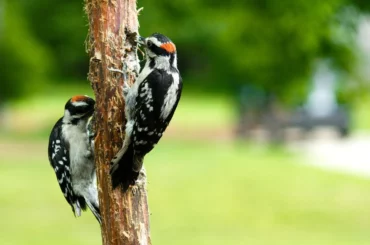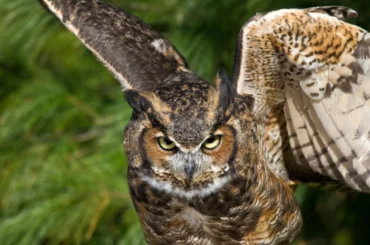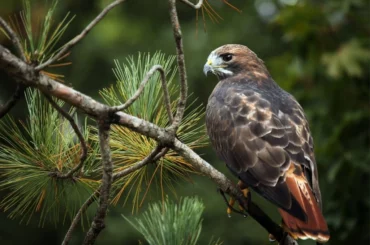Have you ever wondered about the captivating world of hummingbirds in Ohio? These tiny, vibrant creatures, buzzing around in a blur of wings, are a wonder to behold and are more diverse than you might think! Ohio isn’t just about cardinals and robins; it’s a hummingbird haven, too!
Let’s explore these ten species that call Ohio their home and why they are worth your attention.
What Do Hummingbirds Look Like in Ohio?
Curious about what hummingbirds in Ohio look like? Despite their small stature, their bodies are powerhouses designed for swift flight, with wings that can beat up to 80 times per second. Now that’s fast!
Their colors? Absolutely stunning. The males are usually more colorful, their bright throats, or “gorgets,” sparkling like jewels. Conversely, females are a bit more subtle with their beauty, sporting softer colors. And their favorite dining spots? They’re big fans of nectar-filled flowers and tiny insects.
You’ll often spot these delightful creatures in gardens, parks, and woodland edges throughout Ohio, showcasing their acrobatic flying skills as they hover and dart, searching for food.
1. Ruby-Throated Hummingbird
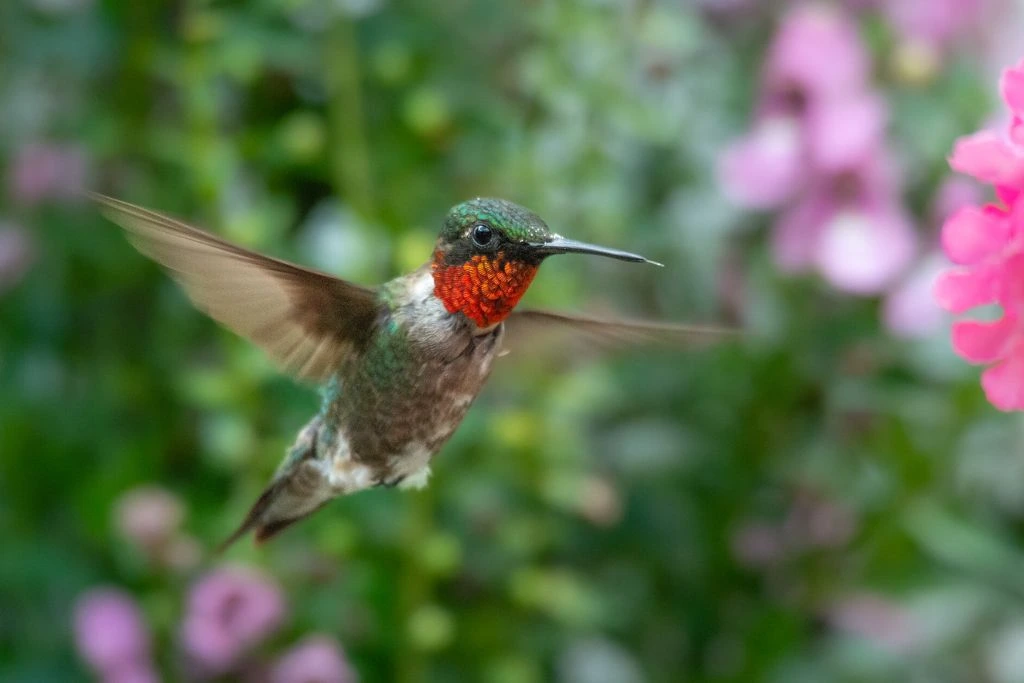
- Kingdom: Animalia
- Phylum: Chordata
- Class: Aves
- Order: Apodiformes
- Genus: Archilochus
- Species: A. colubris
Ruby-throated hummingbirds (Archilochus colubris) are well-known for their ruby-red throats or “gorgets.” However, only the males boast this fiery feature, while the females flaunt modest, greenish-white plumage. These tiny birds usually measure about 3.5 inches long and weigh just around 3 grams – less than the weight of a penny!
These hummingbirds are extraordinary long-distance migrants, traveling up to 500 miles nonstop over the Gulf of Mexico to reach their breeding grounds. Their bodies are finely tuned for survival, with their rapid wingbeats and hovering ability being key adaptations.
In the breeding season, female Ruby-throats take the lead, constructing the nest on a slender, often descending branch, far from the trunk for safety. The tiny nest, about the size of a walnut, is made of plant down and spider silk, providing flexibility and strength. Usually, two white eggs are laid, and the female incubates them alone for about two weeks.
Here’s a fun fact: A ruby-throated hummingbird’s heart can beat more than 1,200 times per minute in flight. Also, despite their tiny size, they are fiercely territorial and will readily chase away intruders, even much larger birds!
While many hummingbirds in the wild don’t make it past their first year due to harsh conditions, those that can live up to 9 years. The average lifespan, meanwhile, is about 5 years. These colorful birds are Ohio’s most common hummingbird species and can be spotted across the state, especially in gardens and woodlands with plenty of flowers for nectar and insects.
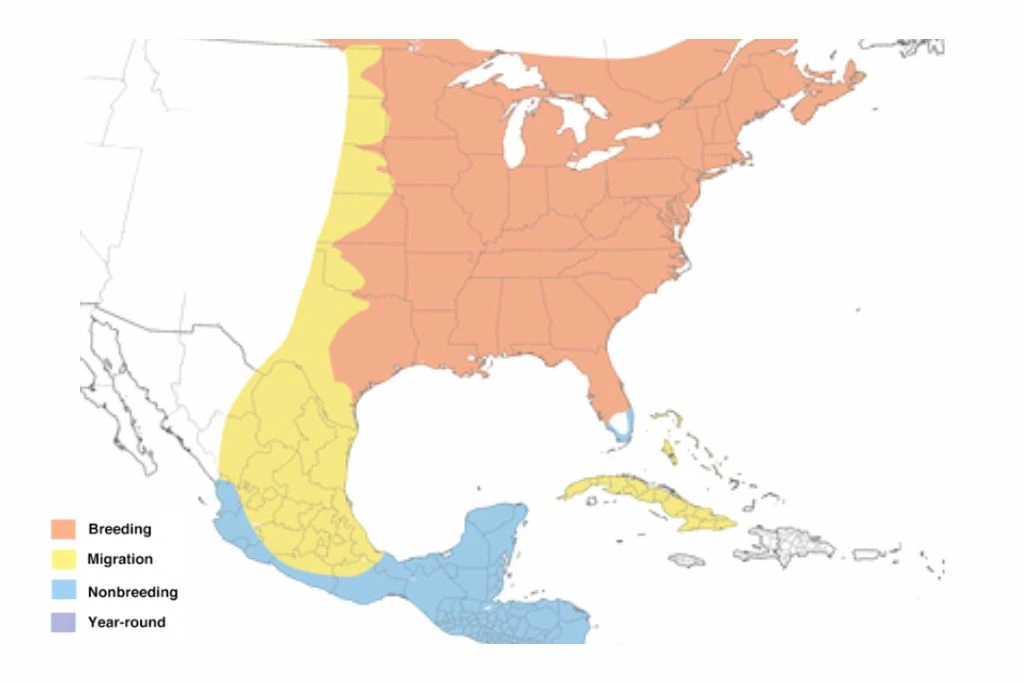
2. Rufous Hummingbird
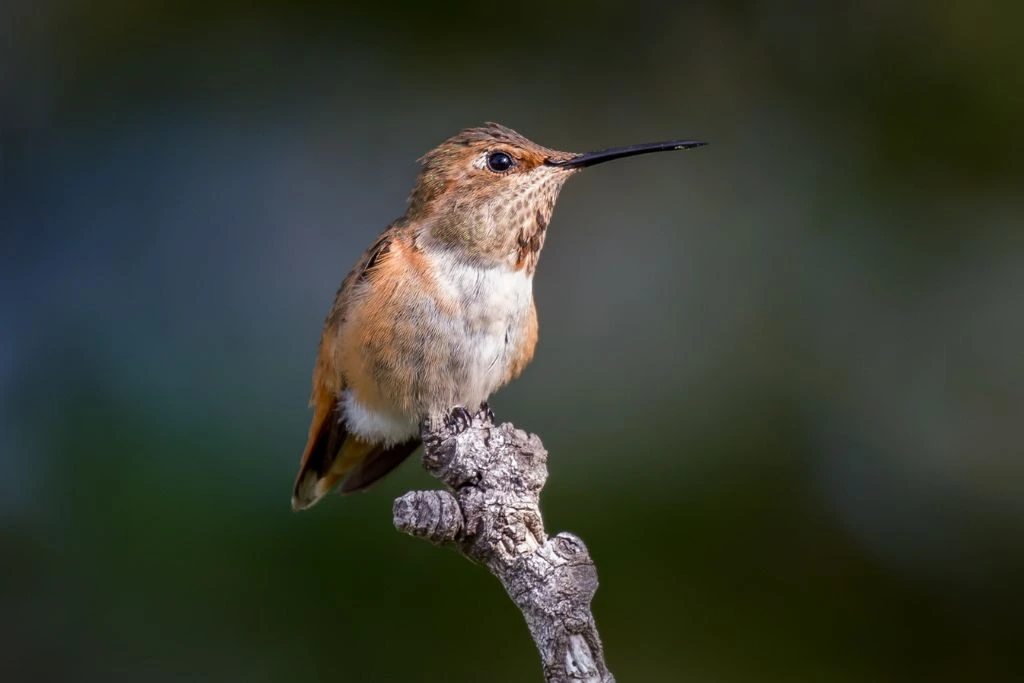
- Kingdom: Animalia
- Phylum: Chordata
- Class: Aves
- Order: Apodiformes
- Genus: Selasphorus
- Species: S. rufus
The Rufous hummingbird (Selasphorus rufus) is a feisty, compact bird with a big personality. Males are easily recognizable by their stunning copper-orange plumage and brightly lit red throat. Conversely, females have a green upper body, a white belly, and rufous (reddish-brown) sides and tails.
Rufous hummingbirds hold the record for the longest migration route of any hummingbird relative to their size. They travel over 3,000 miles from Alaska to Mexico! They’ve adapted to various habitats, from woodland edges to gardens and meadows. Although not traditionally found in Ohio, they’re increasingly seen during winter, likely due to changing migratory patterns.
Females are responsible for nest-building, laying eggs, and caring for the young. They construct the nest from soft plant materials and spider silk, camouflaging it with lichens. They lay one to three eggs at a time, which are incubated for about 15 to 17 days.
Rufous hummingbirds are known for their incredible flight skills and aggressive nature. These tiny warriors aren’t afraid to chase off other birds, even larger species, from their territory!
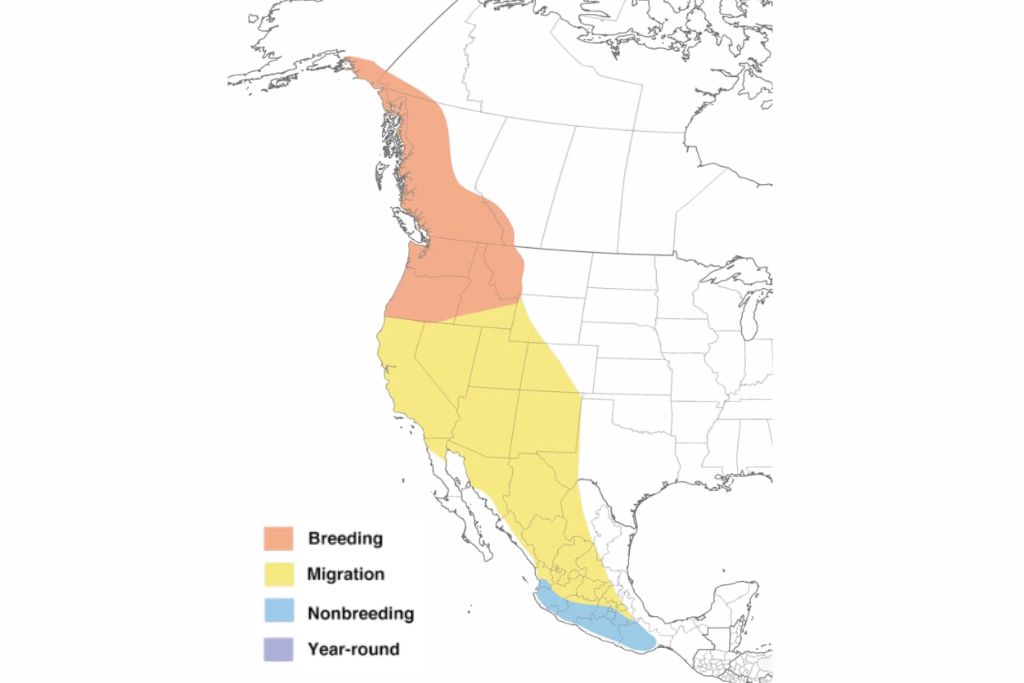
The average lifespan of a Rufous hummingbird is around 3 to 5 years, although some have been known to live up to 8 years. Rufous hummingbirds are occasionally seen in Ohio, particularly during late fall or early winter, so watch for these aggressive visitors in your backyard!
3. Anna’s Hummingbird
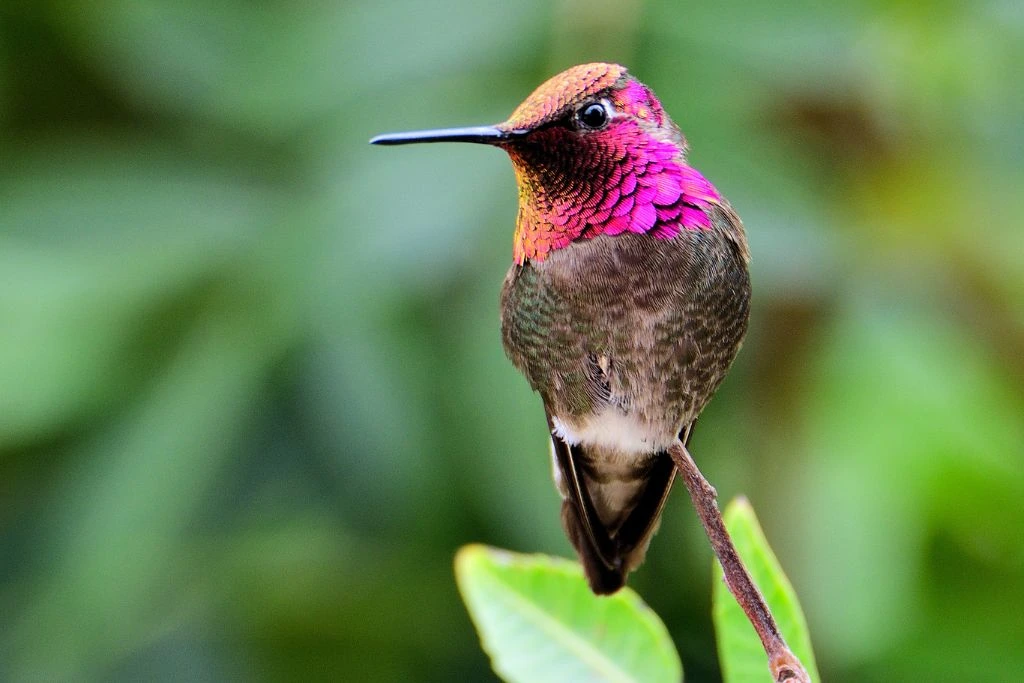
- Kingdom: Animalia
- Phylum: Chordata
- Class: Aves
- Order: Apodiformes
- Genus: Calypte
- Species: C. anna
Let’s turn our attention to Anna’s hummingbird (Calypte anna), a real charmer. This species showcases an iridescent bronze-green back with a gray chest and belly. The males stand out with their stunning, rose-pink throat and crown, while the females display more muted colors but can surprise us with a few iridescent feathers on their throats.
Anna’s hummingbirds have a unique ability among hummingbirds to survive cooler temperatures, which is why they have a larger year-round range compared to other species. Though they are not commonly seen in Ohio, a changing climate and plentiful feeders have increased sightings, especially during the hummingbird season in Ohio.
When nesting, females skillfully construct the nest with plant fibers, feathers, and pieces of bark, all held together with spider silk. Next, the female lays two white eggs, which she incubates for about 16 days.
Ever wondered who holds the title for the longest song among hummingbirds? That would be the male Anna’s hummingbird. They have a distinctive song, which they often accompany with a unique aerial display, shooting upward of 130 feet into the air before swooping back down in a dive!

Anna’s hummingbirds typically live up to 5 years in the wild, but some have been recorded living as long as 11 years! While Anna’s hummingbirds are not traditionally seen in Ohio, there have been occasional sightings, often delighting local bird enthusiasts. It’s always a treat to capture pictures of hummingbirds as rare as Anna’s in Northeast Ohio!
4. Calliope Hummingbird
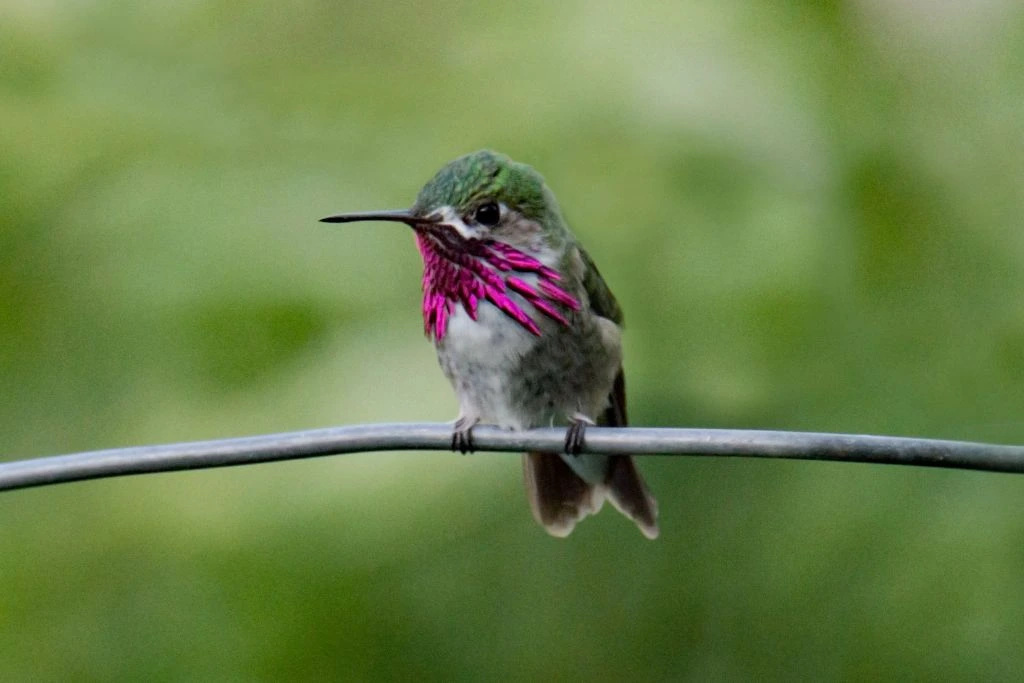
- Kingdom: Animalia
- Phylum: Chordata
- Class: Aves
- Order: Apodiformes
- Family: Trochilidae
- Genus: Selasphorus
- Species: S. calliope
The Calliope hummingbirds (Selasphorus calliope), the smallest breeding bird in North America, stand out for their minuscule size. Adult males are particularly striking with their streaked, magenta-colored throat, whereas females and juveniles display a more subdued, greenish-gray color.
These diminutive birds are robust migrants, trekking from their breeding grounds in the Pacific Northwest to their winter homes in Mexico. Though they’re not typically seen in Ohio, as they favor mountain meadows and forests, there have been instances where these little adventurers have made an appearance.
In the realm of nest-building and child-rearing, the female Calliope takes charge. Her nest is a tiny cup of plant down and spider silk, typically placed on a downward-sloping branch.
Did you know the male Calliope has a unique courtship display? He performs a series of high, swooping dives above the female, creating a buzzing sound with his wings. It’s a sight and sound spectacle that’s truly unforgettable!
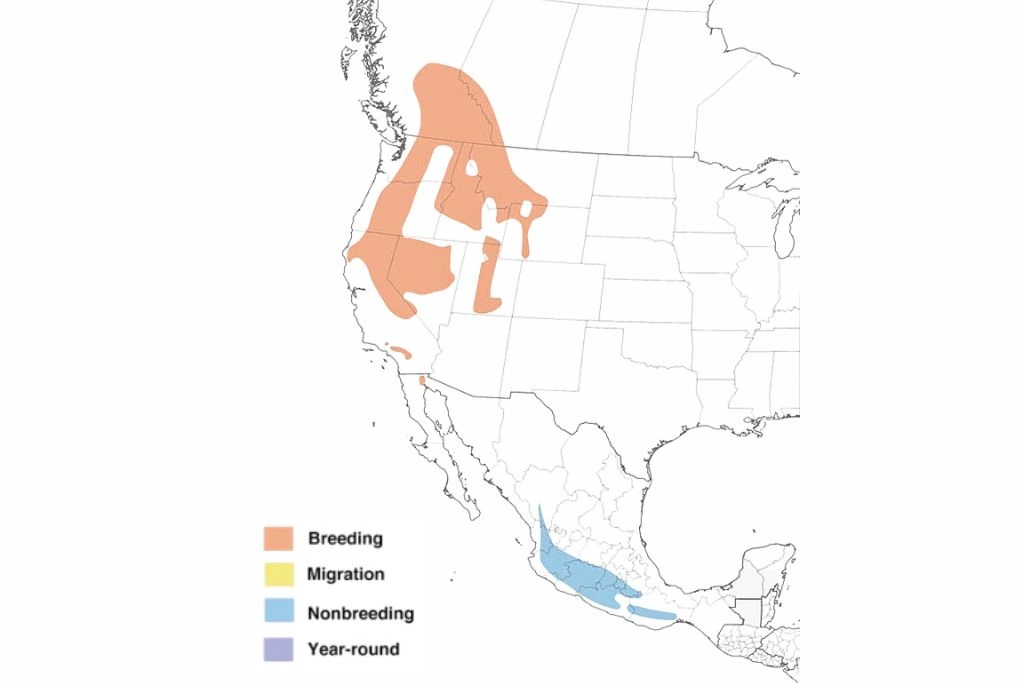
While it’s rare to spot a Calliope hummingbird in Ohio, hummingbird enthusiasts should keep their feeders stocked in case one of these tiny travelers decides to drop by during the hummingbird season in Ohio.
5. Black-Chinned Hummingbird
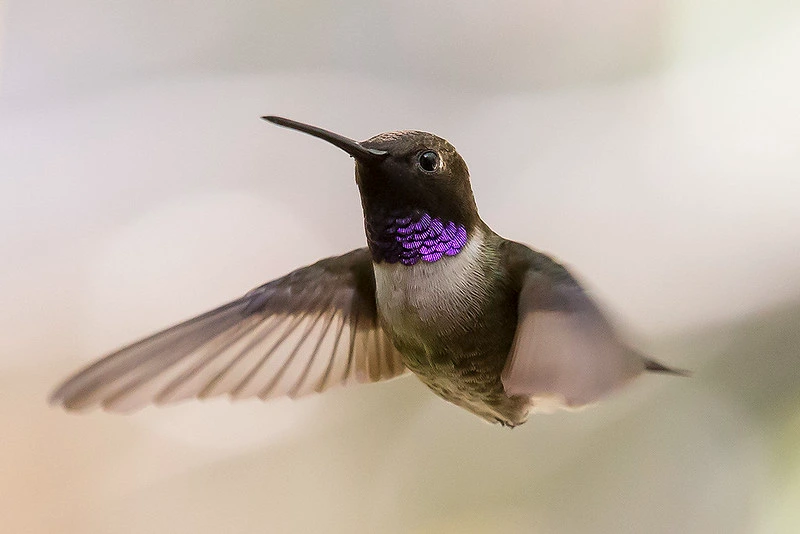
- Kingdom: Animalia
- Phylum: Chordata
- Class: Aves
- Order: Apodiformes
- Genus: Archilochus
- Species: A. alexandri
Stepping into the spotlight now is the black-chinned hummingbird (Archilochus alexandri), an enchanting little bird with unique features. These hummingbirds showcase a metallic green upper body, while the males boast a black chin with a stunning band of iridescent purple beneath, visible when the light hits just right. The females are more subtle, with a white underbody and greenish flanks.
Black-chinned hummingbirds are remarkably adaptable, comfortably nesting in various habitats from deserts to mountain forests. While they don’t typically venture as far east as Ohio, changes in climate and availability of food sources can sometimes lead to surprising visitors like these.
When it’s time to raise a family, female black-chinned hummingbirds show their impressive independence. They construct a compact nest from the plant down, attaching it to a tree branch with spider silk. After laying two white eggs, the female alone incubates them for about two weeks.
Here’s an interesting tidbit: the black-chinned hummingbird can enter a state of deep sleep, called torpor, to save energy. In the wild, they typically live around five years, though some lucky ones have reached the ripe old age of 10.

While it’s uncommon to spot a black-chinned hummingbird in Ohio, the world of birds is full of surprises. So keep your feeders ready, and your eyes peeled, especially during the hummingbird season in Ohio. You can capture some fantastic pictures of hummingbirds you didn’t expect!
6. Allen’s Hummingbird
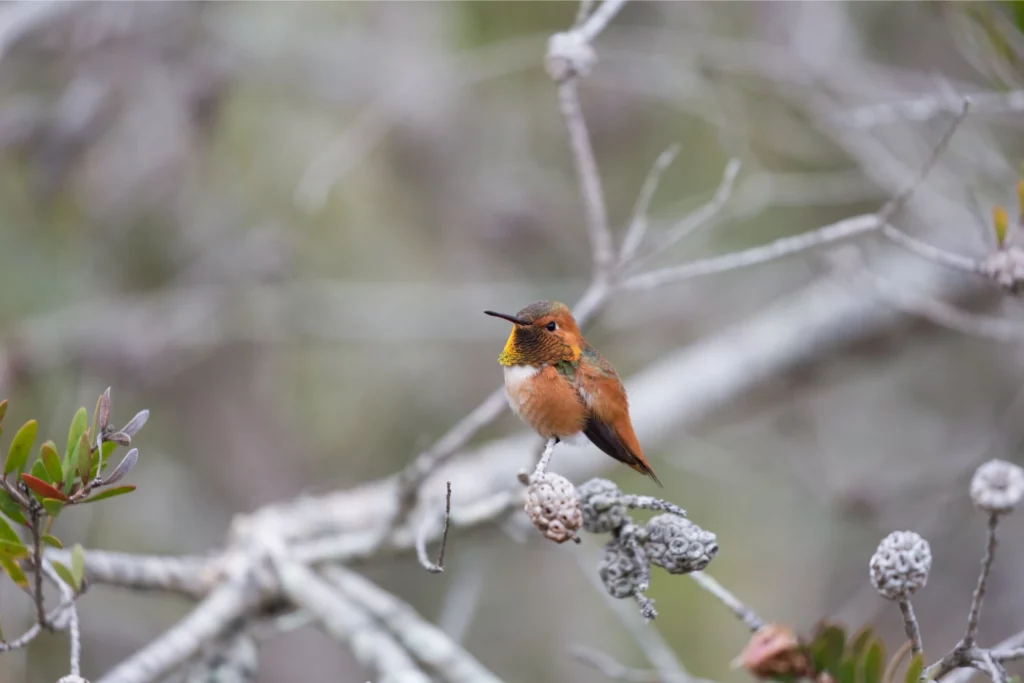
- Kingdom: Animalia
- Phylum: Chordata
- Class: Aves
- Order: Apodiformes
- Genus: Selasphorus
- Species: S. sasin
Allen’s hummingbirds (Selasphorus sasin) are small, vibrant birds. The males are known for their fiery orange-red throat, green back, and chestnut sides and rump. Females have a green back and crown, with reddish-brown speckles in their throat and a white belly. These hummingbirds have adapted to various habitats, including coastal chaparrals, gardens, and mountain meadows.
While not a regular visitor to Ohio, they have been occasionally spotted in the state, likely due to changes in migratory routes. Their nests are usually built on a downward-sloping branch or vine made from plant fibers, feathers, and bits of leaves, held together with spider silk.
Allen’s hummingbirds are known for their dazzling courtship displays. The male flies back and forth in a broad arc, diving down in a U-shaped pattern to impress the female. Allen’s hummingbirds typically live up to 5 years, although some have lived beyond that in ideal conditions.

Allen’s hummingbirds are rare visitors to Ohio, but keep your feeders filled and your eyes peeled. You never know when one might make a surprise visit!
7. Mexican Violetear
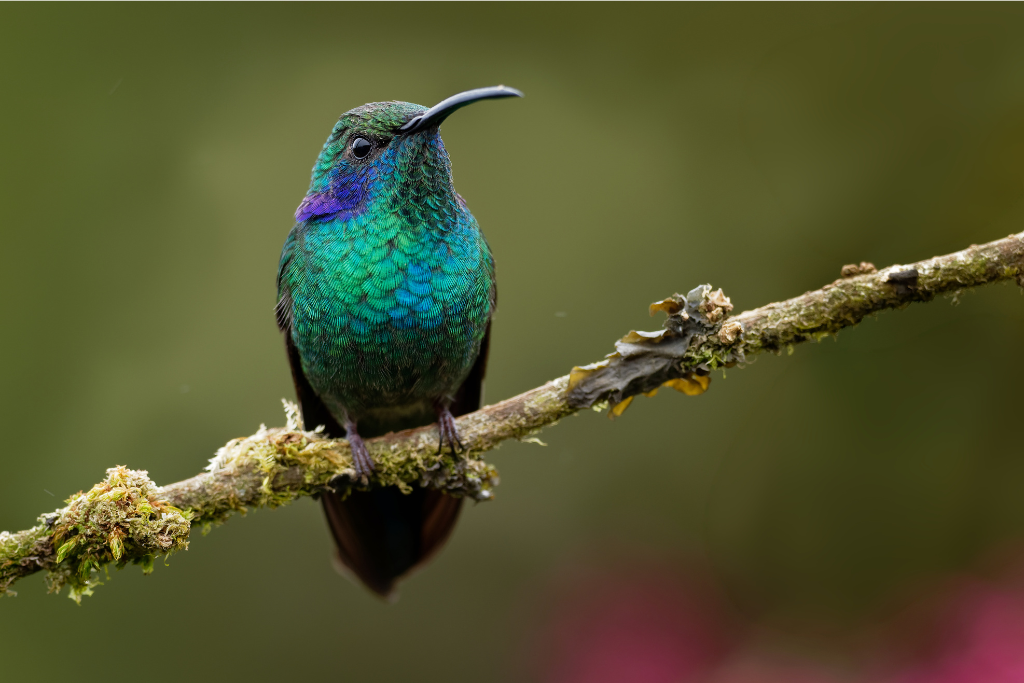
- Kingdom: Animalia
- Phylum: Chordata
- Class: Aves
- Order: Apodiformes
- Genus: Colibri
- Species: C. thalassinus
Mexican Violetear (Colibri thalassinus) is an absolute spectacle among hummingbirds. Its dazzling, metallic green body and namesake – violet-blue ear patches – make this species unforgettable. In addition, a unique white stripe behind the eye sets them apart, providing a striking contrast to their overall vibrant coloration.
Generally found in highland forests and coffee plantations from Mexico to Nicaragua, these hummingbirds are not regulars in Ohio. But they are known to wander far beyond their usual range occasionally, bringing a splash of tropical color to those lucky enough to spot them.
When it’s time to raise a family, the female violetear constructs a small, cup-shaped nest on a horizontal tree branch. She will lay one or two eggs then incubate them for just over two weeks.
Interestingly, the Mexican violetear is known to be a loner, often feeding and living alone except during breeding season. They also have a distinct, repetitive call that sounds like a low-pitched. buzzing “tzeet.” Mexican violetears are known to live up to 5 years. Though, in ideal conditions, they can live much longer.

While it’s not common to find a Mexican violetear in Ohio, never say never in the bird world. Keep your feeders stocked and your camera ready, especially during hummingbird season in Ohio. You may just get to add some unique female hummingbird pictures or rare species photos to your collection!
8. Broad-Tailed Hummingbird
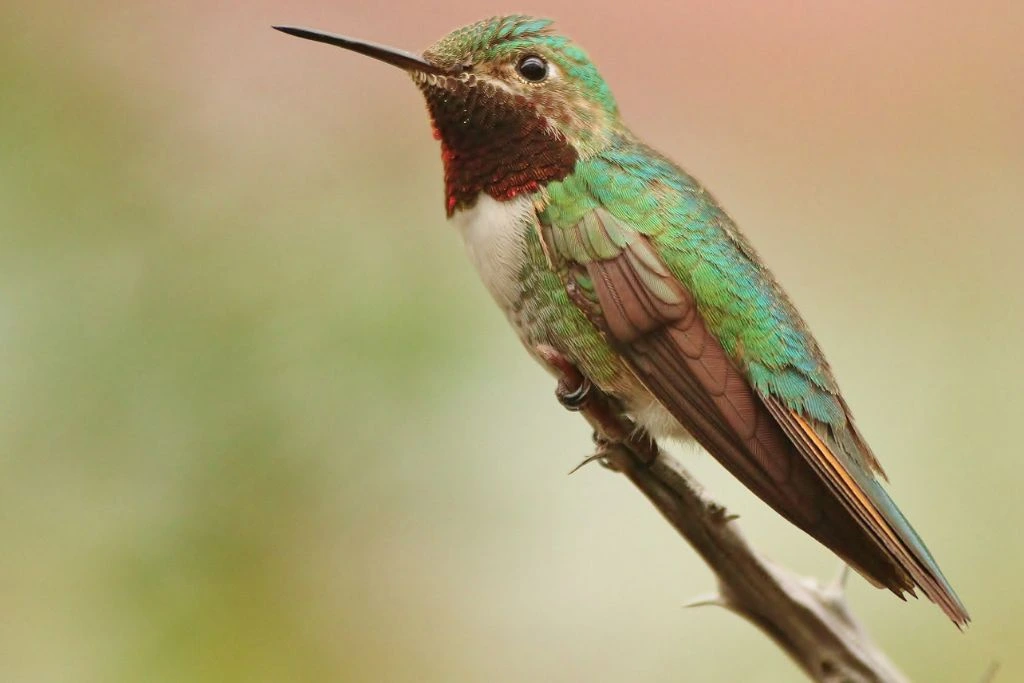
- Kingdom: Animalia
- Phylum: Chordata
- Class: Aves
- Order: Apodiformes
- Genus: Selasphorus
- Species: S. platycercus
Broad-Tailed hummingbirds (Selasphorus platycercus) are mountain dwellers, typically found in the Rocky Mountains and highlands of Mexico. They’re not usual residents in Ohio, but you can spot one on a rare occasion due to their migratory nature.
This species is known for its iridescent green back and crown, white chest and, in the case of the males, a radiant rose-red throat. Though not as flashy, the females are equally captivating with their green-speckled white throats.
Female broad-tailed hummingbirds are the architects and caretakers of the family. First, they build a cup-shaped nest on a tree branch from plant fibers, lichen, and spider silk. After laying two eggs, they then incubate them for about two weeks.
One unique trait of male broad-tailed hummingbirds is the high-pitched trill their wings make in flight. This distinctive sound can be heard from quite a distance and is an auditory treat for bird enthusiasts!

Spotting a broad-tailed hummingbird in Ohio is indeed rare but possible. Always be ready during the hummingbird season in Ohio because you never know when you might glimpse one of these beauties and add their photos to your collection of hummingbird pictures!
FAQs
Can I See All These Hummingbird Species in My Backyard in Ohio?
No. While Ohio hosts various hummingbirds, seeing all species listed in this article in your backyard is rare.
Is There a Specific Time of the Year When I Can See More Hummingbirds in Ohio?
Yes, hummingbird season in Ohio typically peaks in late summer, around August.
Are the Female Hummingbirds as Colorful as the Males?
No. Female hummingbirds display more subdued hues compared to vibrant males.



